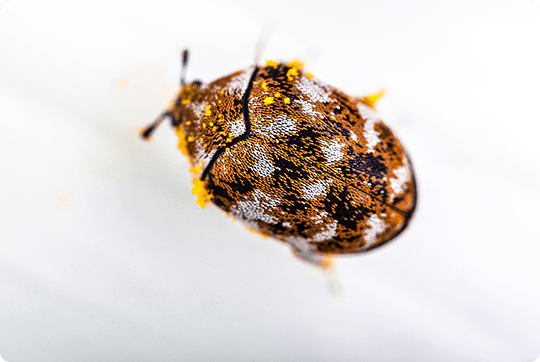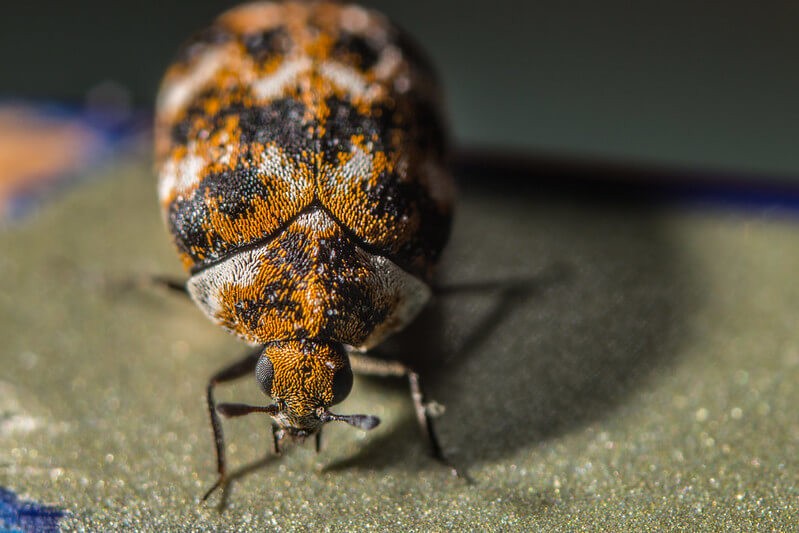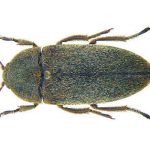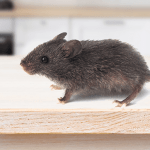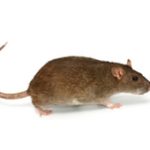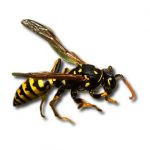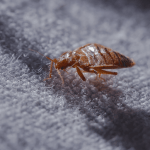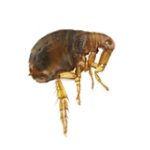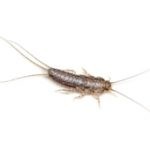How to Get Rid of Carpet Beetles
A healthy carpet beetle diet consists of EVERYTHING you have in your house. If you have noticed small ladybug-like creatures roaming your home and are finding holes in your clothing, furniture, and carpets you may be facing the terror of the carpet beetle.
We have covered how to deal with various other bugs that like to eat particular objects and materials before. The carpet beetle may be named for eating floor coverings but don’t be fooled as they can and will eat anything. Now, let’s go on a carpet beetle hunt!
How to identify a carpet beetle
There are three known species of carpet beetle that can be found in the U.K. These are the Varied Carpet Beetle, the Furniture Carpet Beetle, and the Black Carpet Beetle.
- Varied Carpet Beetle. Or“Anthrenus verbasci”. These are the smallest of the carpet beetles measuring at around 0.25cm. They have a slightly rounded shell and are usually black/brown in colour with flecks of white on their backs.
Check more about the common UK types of carpet beetles in the UK
- Furniture Carpet Beetle. Or “Anthrenus flavipes”. These cousins of the Varied Carpet Beetle are slightly larger in size at around 0.3-0.5cm and have a more rounded shell, their shells are light brown speckled with black and white markings.
- Black Carpet Beetles. Or “Attagenus unicolor”. The final member of the carpet beetle family on our list is also the largest at approximately 0.3-1cm in length. They are also more noticeable than their counterparts as they do not share the same rounded shape as the others and their shells are either solid brown or shiny black.
While all carpet beetles will eat anything they do have preferences, the Varied and Furniture carpet beetles tend to focus on devouring natural fibres such as wool and leather. The Black carpet beetle has more refined tastes, they tend to feast on dry foods such as cereal, oats, and dry pet food.
Do you have pest infestation in your property?
Get the help of a specialist in the battle against the pests!
Signs that You have Carpet Beetles at Home
Carpet beetles are often found living outdoors where they live, breed and feed on nectar and pollen, but they are attracted to light and food sources in your home, too. Just like every other pest, carpet beetles like to live in human habitats due to the overabundance of food, lack of adverse conditions such as frost and rain, and there are no natural predators which means that they can breed in safety. The main signs of a carpet beetle infestation are:
- Holes/damage trails in carpets or rugs which contain natural fibres.
- Damage to animal products such as fur and feathers.
- Holes/damage to leather furniture.
- Damaged photos, paperwork, and book covers.
- Shed skins, a result of larvae transforming into fully grown adults. Those shells are reason number 1 for itchy irritations due to the bristle hairs.
- Faecal pellets appear black or brown in colour and are very small and dry.
Signs of a carpet beetle infestation can easily be misinterpreted as evidence of moth activity, so check our guide on how to deal with moths. While the damage looks similar, carpet beetle damage is usually confined to one area whereas moth damage is often spread over a larger area.
How does a carpet beetle get in your home?
As they are quite small carpet beetles don’t experience much trouble in finding a way into your home. The common methods employed by these six-legged invaders are to hitch a ride on any flowers or plants you bring into your home, through air vents, and fly through cracks or open windows. Some ingenious members of the species may also cling to pet hair or your clothing in order to be brought inside undetected. It’s also possible that the little mischiefs use chimneys, plumbing openings, electrical conduits and vents as a sesame door to your home.
Where can you find carpet beetles?
Once in your home, carpet beetles infest an array of household furniture and items. Wool-made clothing, rugs and carpets are easy prey. If you are a hunter and have a collection of mounted trophies, carpet beetles can be attracted to their animal hides. If a small animal, such as a squirrel or a rat, has been trapped in your walls and died, the beetles will infest its fur, too. Some types of beetles nourish on dried flowers and potpourri, dry pet and human food (pasta, flour, breadcrumbs, etc.). If you’ve looked into all those places, and still are not finding the source of the infestation, consider checking out a professional pest control service.
How to get rid of carpet beetles
Now that you are armed with the knowledge needed to identify carpet beetles it is time to begin “Operation: Beetle Removal”. Follow the steps below and your home will be beetle free in no time.
- Locate the source. Before you can remove any pest you first need to find out where they are most active and where they live. As we said above, carpet beetles are not very adventurous so they tend to live in dark places close to their chosen food source such as beneath or inside furniture, in cabinets that store dry food and at the edge of carpets. Look for damaged areas and you will find carpet beetles nearby.
- Unleash the might of your vacuum. Once you have located the source, or sources, of your carpet beetle infestation the first thing you should do is vacuum the area thoroughly, following this vacuum the rest of your home. Next, vacuum every part of your upholstered furniture (sofas, armchairs, etc) that cannot be machine washed, be sure to use the appropriate attachments to vacuum in the hard-to-reach places. You will need to vacuum your home meticulously at least once a day until the infestation is removed.
- Use Boric acid powder. Boric acid is to insects what holy water is to vampires. There are very few insects that do not die upon contact with boric acid, thankfully carpet beetles are susceptible to this insect-apocalypse-causing product. Sprinkle boric acid liberally on your carpet and vacuum it up after two or three hours, this will kill the beetles, larvae, and eggs. Warning: boric acid might cause unwanted effects on your pets, so you better keep them away from the cleaned area for a few hours or so.
- Get rid of infested clothing. If you have found evidence of extensive carpet beetle damage on one or more pieces of clothing it is best to throw them away. Although you may be tempted to keep such items there may be carpet beetles or their eggs hidden within the fabric, disregarding this possibility is likely to prolong the infestation.
- Wash everything. Every piece of machine-washable fabric should be washed in hot, soapy water, this includes clothing, towels, bedding, cushion covers, and curtains. Machine wash these items on the highest temperature setting and laundry detergent. To be sure that your carpets are no longer harbouring these destructive beetles, it is advisable to either shampoo your carpets with hot water or use a steam cleaner.
- Remove infested food. Get rid of all food that shows signs of beetle activity or which you suspect are beetle targets.
- Release your inner hunter. Place insect traps around the infested as well as suspected areas after cleaning. Most traps will work but pheromone glue is recommended as you will be able to see whether or not you successfully removed the entire infestation.
- Replace natural linens with synthetic sheets. If you want to go fully radical, you can substitute all your natural fibre textiles with synthetic ones. The natural materials contain keratin, which is a tasty protein for all insects that dine on clothes, carpet beetles included. Keratin is abundant in hair, so it comes with no wonder that items made from wool or leather are easy prey. Cutting the carpet mites from the food source can force them to leave forever.
Need carpet beetle treatment?
Get in touch with local experts and qualified service provider will help you.
Carpet Beetle FAQs
Can you kill carpet beetles in the dryer?
Dry cleaning kills carpet beetles on cloth materials. However, with carpet beetles, you need to remove their dead skin sheds and hairs too, as they are a cause of allergic reactions.
Do carpet beetles cause allergic reactions?
Yes, it’s possible that their dead skin sheds and hairs cause skin irritation. You have to physically remove them to stop the reaction and increase the humidity level in the house. Pesticides alone won’t stop any irritation as the problem is about the physical presence of dead skin shells.
How to get rid of carpet beetles dead skins and hairs?
Vacuuming regularly is one of the best ways, however, if you install a HEPA filter you will ensure the dead skins won’t emit more fibers in the air. It’s all about increasing the level of humidity in the infested area so that you avoid the build-up of shells. Sprinkle distilled or cool pre-boiled water in the area to wash out the remains.
How long do carpet beetles live?
Carpet beetles live the longest as young ones – between 9 months and 2 years. Their larvae eggs hatch between 7 to 35 days and larvae subsequently can survive at least 4 weeks without a food source. Adults don’t face the same fate – they live for a few weeks to hatch eggs and die.
Read more about carpet beetles lifecycle
Can carpet beetles fly?
Yes, adult beetles can easily fly from one room to another or from the outside through an open window, thus spreading the infestation. Young ones and larvae do not fly.
Can carpet beetles live in a mattress?
Carpet beetles do not live in beds – they can often be confused with bed bugs. Carpet beetles feed on fabrics, not human blood. However, if your house is particularly infested, some of the carpet beetle larvae can be found feeding on the fabrics in your bed.
How do exterminators treat carpet beetles?
Fantastic Pest Control incorporates the method S.T.O.P. (Survey, Treatment, Observation, Prevention). Every pest control treatment begins with a survey of the area to fully determine the extent of the infestation. The affected surfaces are treated with strong professional insecticide that has a long-lasting effect. Professional carpet beetle exterminators also include a second visit in a full-service option within several months after the point blank. Lastly, in every pest control job, subsequent prevention plays a big role in avoiding future problems with pests – check our tips below.
How to keep carpet beetles from invading
Once you have gotten rid of the existing infestation the last thing you want is to be plagued with another, following the advice below can help you to deter unwanted beetle house guests.
- Clean regularly. Keeping your home clean and free of hair, dust, and lint removes potential food sources and hiding places.
- Store dry food in air-tight containers. Containers with lids will keep those pesky beetles out of your favourite foods, your pets will also thank you as they will no longer have beetle-breath.
- Protect clothing in dark closets with plastic covers or cedar. Regardless of how hard they try, carpet beetles cannot chew through plastic. Keeping your unused clothing sealed in plastic will ensure that no bug can turn your favourite top into lunch. As with most insects, carpet beetles detest the smell of cedar so placing some fragrant cedarwood in your closet or drawers will help keep the bugs at bay.
- Open closet doors for a couple of hours a day. Since carpet beetles live in the shadows opening your closet up to natural light for a few hours each day can dissuade them from setting up a colony in your wardrobe.
- Routinely remove bird and animals nests from around your home. Carpet beetles are among the many pests which call bird and animal nests home, removing nests from in and around your property will help keep you protected from potential beetle invasions as well as mites and ticks.
- Install window screens or keep windows closed. The easiest way to stop these tiny beetles of destruction from entering your home is to simply keep your windows closed. If you must have open windows, installing window screens is worth your consideration as it will keep the vast majority of pests outside where they belong.
- Carefully inspect plants before bringing them into your home. Carpet beetles love to hide on plants and freshly cut flowers for a free ride to the beetle’s promised land (your house), inspect flowers and plants for beetle activity carefully before bringing them inside.
***
So there we have it, your guide on how to get rid of carpet beetles. All you need to do is find the source, vacuum thoroughly each day, throw away infested items and wash everything else in hot water. If you have been struggling against a carpet beetle infestation and are at your wit’s end it may be time to call in the professionals. Contact us here at Fantastic Pest Control for a quote and let our pest control experts rid your life of the carpet beetle menace.
Still cannot handle the carpet beetle infestation?
Note that we only aim to provide some useful information about how to get rid of carpet beetles infestation. We cannot guarantee that our suggestions will work for you.



